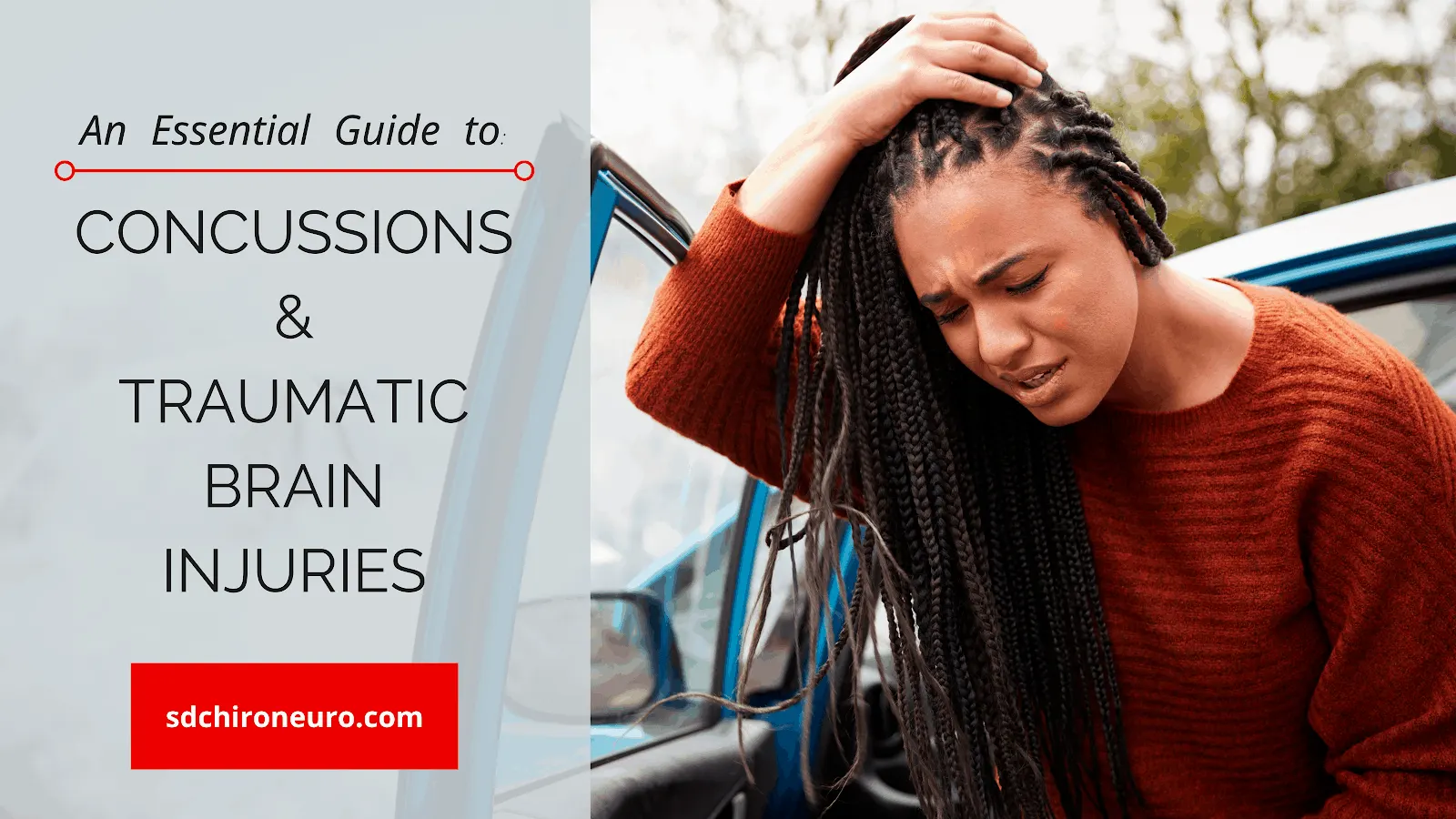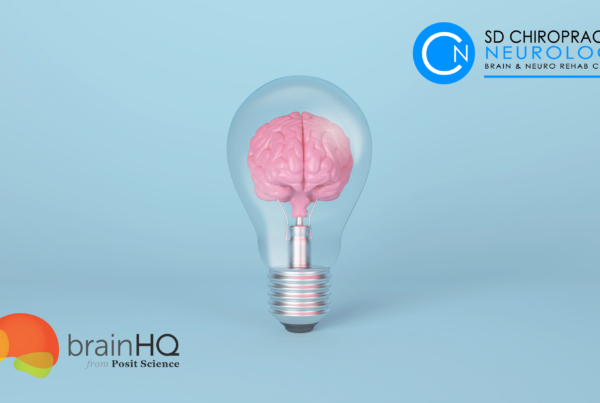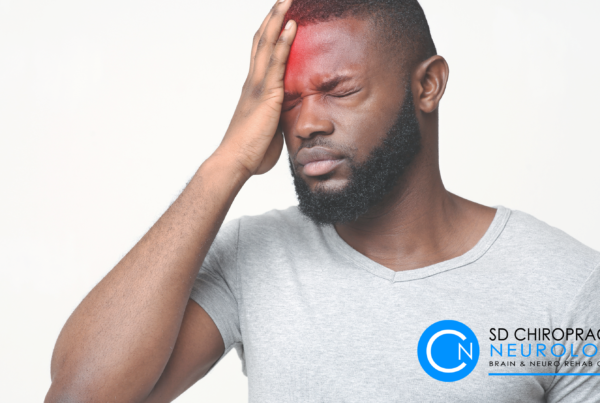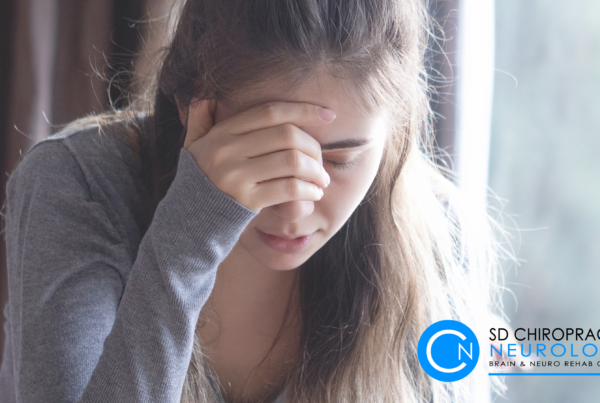
Concussions also known as mild traumatic brain injuries (mTBIs) are commonly talked about among the media nowadays with football players and other professional athletes bringing chronic traumatic encephalopathy (CTE) to light. About 5% of the population annually will experience some kind of head injury with 15% experiencing long term symptoms. Some people can experience mTBI and TBI symptoms without directly hitting their head and can experience it through things like whiplash. There does not need to be a direct impact to the head for you to experience a head injury. About 1.5m TBI’s occur each year and affect females more often than males.1,2
How did I get a concussion?
Due to the shearing and torquing nature of a head injury, all midline structures in the brainstem will be affected alongside the cortex. It takes minimal forces to cause a head injury and even minor whiplash injuries can cause concussion symptoms in certain individuals. More severe cases of mTBI/TBI’s tend to be more traumatic like a sports injury or a car accident, but if your neck stabilizers are weak then you may need less force to experience a more severe head injury.
Inflammatory Cascade
You can think of the initial injury as the Primary injury in a TBI/mTBI, while the inflammation that occurs afterwards as the Secondary injury. The secondary injury comes as a wave of inflammation that can affect you within minutes or even days later. With the increased inflammation in the brain, you get damage to the tissues and cells in the brain that can cause long term symptoms as well as a susceptibility to another TBI/mTBI. Basically what happens is you get an immune response that activates the immune system in your brain causing what’s known as cytokines to increase in your system. Cytokines are small proteins that influence your immune system and this increase in cytokines has been correlated with dysfunction in the brain. 4
Brain-Gut Axis
Your GI system has a surprising amount of connections to your brain and the gut-brain axis is becoming increasingly important when addressing head injuries and mood disorders related to head injuries. Oftentimes the gut is even referred to as the third brain! Following a head injury your gut barrier becomes “leaky” in the first 20 minutes and then is seriously compromised within 6 hours. They’ve found that the diversity of “good” gut bacteria decreases while promoting harmful bacterias to flourish in the gut.5 As described above with the inflammation cascade, this can lead to long term inflammation in the brain and GI system. By not addressing the head injury as well as the intestinal permeability, you may just be spinning your wheels with recovery. Mood disorders are also a common symptom post-concussion/TBI. About 90% of the serotonin made and circulated throughout the body is made in the digestive tract.6 Your serotonin is in charge of regulating anxiety, happiness and your mood! If you’re feeling like your mood is still flat or your anxieties are still high but your doctor has stated you’ve fully recovered, shoot us a message or set up a consultation with one of our providers!
What symptoms might I experience after a concussion or TBI?
Dysautonomia
Dysautonomia or the inability to regulate your autonomic nervous system, is a commonly ignored area after a concussion. Your autonomic nervous system is basically any organ that “automatically” operates without your control. You can think of this like your gut, heart, lungs, glands, vessels, etc. As you can see this can affect so many different parts of your body from sexual dysfunction to headaches. People might experience anxiety, pounding heart, constipation, headaches, GI issues, joint pain, cold limbs, among other things. Dysautonomia is such a large topic that we’ll cover it in a later blog post to really get into the details and mechanisms behind it.
Dizziness and Vertigo
About 30 to 65% of people with a traumatic brain injury (TBI) will experience some kind of dizziness or equilibrium issues (feeling off balance).8 There are three types of post-traumatic vertigo that are commonly associated with concussions/TBIs: BPPV, labyrinthine concussion, and traumatic labyrinthine hydrops. You can find out more about this specific combination of symptoms related to concussion in this previous blog.
How are mTBI’s and TBI’s diagnosed?
The initial testing done by a medical professional usually involves a computerized tomography (CT) scan or a magnetic resonance imaging (MRI) scan. Usually this is based on how recent the head injury was and the severity. Some might not opt to do any diagnostic imaging if they believe the injury is mild. Typically in concussions you won’t be able to find anything on the MRI as it’s used more to detect any bleeding and or visible structural brain abnormalities. However, there are more tests that can be performed to further assist in diagnosing a mTBI and TBI. In some clinics like ours they will utilize a thorough neurological bedside test, videonystagmography (eye tracking software shown above), balance testing (shown below), as well as any blood work to help with figuring out why you are still experiencing symptoms related to your head injury. It’s important to be thorough with testing as there are many areas where your symptoms can be generated from as discussed above. We suggest getting checked out or scheduled for an initial consultation here if you’d like more insight as to why you still might be experiencing concussion and TBI symptoms.
How long will I feel these symptoms?
Typically symptoms should resolve within 6 weeks, however some people may experience symptoms for years following a head trauma. Some studies state that on average people recover in about 10 days while other studies stated that there was a recovery within a year.10,11 About 15% of people who experience a TBI will experience long lasting symptoms.12 Why some people experience symptoms longer than others depends on a variety of factors and depending on your situation you may end up in a negative feedback loop. People who have repetitive head injuries or persistent symptoms past 4-6 months are less likely to recover on their own without rehabilitation. Unfortunately people with vertigo and disequilibrium symptoms especially, you’re at a much higher risk for falling and hitting your head again. It begins to snowball and your symptoms may become even worse and oftentimes it can be difficult to improve without being looked at by a healthcare professional that specializes in mTBI and TBI rehabilitation
Who’s most affected by this?
mTBI’s and TBI’s tend to be very common among athletes as well as the geriatric population. Athlete’s in high impact sports naturally have more opportunities to hit their head and suffer an injury. In younger populations the most common sports that are prone to head injuries tend to be: football, soccer, lacrosse, cheerleading and rugby. While the geriatric population generally has a higher incidence of falls which can be due to underlying vestibular conditions that have gone undiagnosed. This leaves them at a very high risk for hitting their head and suffering from a TBI. However the severity of symptoms can vary based on the individual. Some may have severe symptoms that last long term while some may have mild symptoms that recover immediately. Generally as you age, your brain declines overall and its ability to heal from injuries decreases.
How can Functional Neurology Help Me?
Functional Neurology uses brain based rehabilitation aimed at activating specific pathways and areas of your nervous system that may be inhibiting your recovery. Specifically at our clinic, we do a thorough initial evaluation in order to see what pathways and areas of your nervous system were impacted by the injury. We also approach head injuries from a metabolic and structural aspect. It’s essential for all three of those to be addressed as if you only focus on one, you may be missing out on something that could be indirectly blocking your healing process. All treatment plans at our office are specific to that individual and not cookie cutter. Using the idea of Neuroplasticity which is the brain’s ability to adapt and reorganize synaptic connections, we use a variety of modalities that promote that growth.
What should I do if it doesn’t go away?
If your head injury symptoms persist and you are not improving, please contact a healthcare professional. You may need a more in depth look at what your options are for treatment and why you may not be recovering. If you would like to schedule a free consultation with our clinic, please contact us here. We are here to help you and look forward to working with you!
References
- “Report to Congress: Traumatic Brain Injury in the United States.” Centers for Disease Control and Prevention, Centers for Disease Control and Prevention, 22 Jan. 2016, www.cdc.gov/traumaticbraininjury/pubs/tbi_report_to_congress.html.
- Mollayeva, Tatyana et al. “Sex & gender considerations in concussion research.” Concussion (London, England) vol. 3,1 CNC51. 18 Jan. 2018, doi:10.2217/cnc-2017-0015.
- Treleaven, Julia. (2017). Dizziness, Unsteadiness, Visual Disturbances, and Sensorimotor Control in Traumatic Neck Pain. Journal of Orthopaedic & Sports Physical Therapy. 47. 1-25. 10.2519/jospt.2017.7052.
- Corrigan, F., Mander, K.A., Leonard, A.V. et al. Neurogenic inflammation after traumatic brain injury and its potentiation of classical inflammation. J Neuroinflammation 13, 264 (2016). https://doi.org/10.1186/s12974-016-0738-9.
- “Concussions and the Gut-Brain Axis.” Designs for Health, 25 Sept. 2019, https://blog.designsforhealth.com/node/869.
- Yano, J M et al. “Indigenous bacteria from the gut microbiota regulate host serotonin biosynthesis.” Cell vol. 161,2 (2015): 264-76. doi:10.1016/j.cell.2015.02.047.
- “Symptoms of Traumatic Brain Injury (TBI).” Centers for Disease Control and Prevention, Centers for Disease Control and Prevention, 11 Mar. 2019, www.cdc.gov/traumaticbraininjury/symptoms.html.
- Peterson, M et al. “Balance Problems after Traumatic Brain Injury.” Balance Problems after Traumatic Brain Injury | Model Systems Knowledge Translation Center (MSKTC), https://msktc.org/tbi/factsheets/balance-problems-after-traumatic-brain-injury.
- Haripriya, G R et al. “Incidence and Treatment Outcomes of Post Traumatic BPPV in Traumatic Brain Injury Patients.” Indian journal of otolaryngology and head and neck surgery : official publication of the Association of Otolaryngologists of India vol. 70,3 (2018): 337-341. doi:10.1007/s12070-018-1329-0
- Radanov, B P et al. “Cognitive deficits in patients after soft tissue injury of the cervical spine.” Spine vol. 17,2 (1992): 127-31. doi:10.1097/00007632-199202000-00001.
- Peterson, C L et al. “Evaluation of neuropsychological domain scores and postural stability following cerebral concussion in sports.” Clinical journal of sport medicine : official journal of the Canadian Academy of Sport Medicine vol. 13,4 (2003): 230-7. doi:10.1097/00042752-200307000-00006.
- Cole WR, Bailie JM. Neurocognitive and Psychiatric Symptoms following Mild Traumatic Brain Injury. In: Laskowitz D, Grant G, editors. Translational Research in Traumatic Brain Injury. Boca Raton (FL): CRC Press/Taylor and Francis Group; 2016. Chapter 19. Available from: https://www.ncbi.nlm.nih.gov/books/NBK326715/.
- Balatsouras, D G et al. “Benign paroxysmal positional vertigo in the elderly: current insights.” Clinical interventions in aging vol. 13 2251-2266. 5 Nov. 2018, doi:10.2147/CIA.S144134.
- Samy, H M et al. “Dizziness, Vertigo, and Imbalance: Background, Etiology, Epidemiology.” Retrieved from https://emedicine.medscape.com/article/2149881-overview. 11 Nov 2019.





